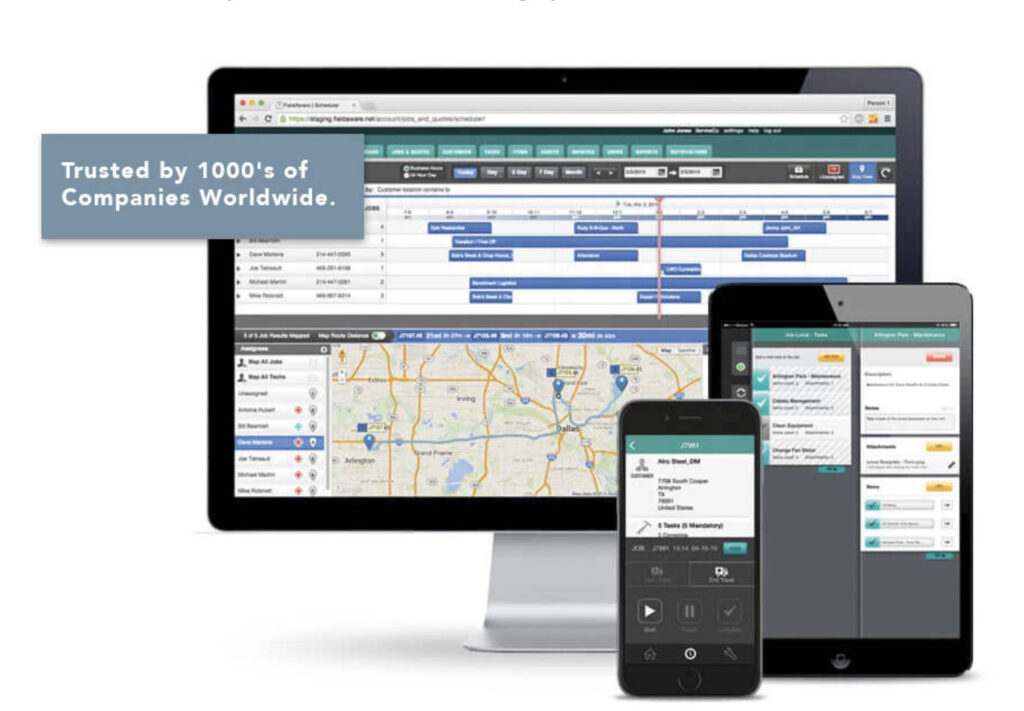Creating Competitive Advantage Through Integrated Field Service Management
FieldAware’s Marc Tatarsky explains why transparency and integration are key to successful field service delivery in today’s environment…
At FieldAware, we measure overall field service maturity across two equally critical threads – technical maturity and operational maturity. Our experience underpins the value of an integrated Field Service Management platform as the source for bridging these two critical threads together, enabling organizations to create a true competitive advantage.
We live in an increasingly connected world. Our refrigerators can now text us when somebody drinks the last sip of milk. For field service organizations, tapping into this connected world and supporting end customers with these expectations are increasing in importance to maintaining a competitive edge. Field service operations are complex, with multiple elements feeding into the end-to-end workflow and relating to the business for more comprehensive business management decisions. Not surprisingly, no single solution can adequately address and manage all the aspects of an organization. The integration of other back-office systems of record to your field service platform is critical for achieving business success and driving competitive differentiation.
Suggested steps for exploring deeper field operation integration include:
- Identify potential sources for integration;
- Identify data from these sources that would be useful in the field service workflow;
- Determine what field service business processes/workflows could benefit from back-office operational insights and data;
- Determine what back-office operational processes/workflow could benefit from field service insights and data.
- Understanding your workflows within field service operations as well as across the broader organization is essential for success.
While this sounds like a simple step, it has historically been a step that can create friction and impede the overall process. Once completed, the path for creating cross-organizational integration is visible, and the ability to drive sources of competitive advantage is improved. Leading organizations derive a competitive advantage by extending the value of field service operations and the field technician.
Leading organizations derive a competitive advantage by extending the value of field service operations and the field technician.
Basic examples include:
Proactive support and maintenance:
- Gaining access to asset history and repair records and marrying that data with service contracts and SLAs provides field service operations with the insight necessary to proactively anticipate client’s needs;
- Ultimately this can evolve into predictive support and maintenance with further integration into IoT and AI data/platforms.
Streamlined customer engagement:
- Arming field technicians with more in-depth insights about the client, the status of the relationship, contractual obligations, etc. from a CRM and F&A systems empowers your first line of customer contact with business information that can be leveraged to change the conversation onsite;
- Couple this with additional training and incentives, and your service organization can play a role in growing the top line.
Inventory management and replenishment:
- Capturing parts and inventory stock, as well as usage, in real-time, then synchronizing that data back to an ERP system elevates the accuracy of the overall inventory system;
- Combine these insights with dispatching the right technician with the right parts and first-time fix rates and customer satisfaction is improved.
From working with a range of companies in different industries, we know that whatever type of field service organization you manage, integration of your business solutions can be fundamental to success.
Essentially the integrating of field service solutions into existing and other business systems means there is no disruption to ERP, CRM, and accounting systems. Ultimately this delivers synchronized workflows, enhanced reporting, and results from the current systems through the integration of data and the actionable outcomes.
Field service leaders recognize that integration can elevate their field service operation, transforming it into a value-driving organization that delivers real business results and takes their company to the next level.
Further Reading:
- Read more about Service Strategy
- Read more FSN exclusive articles from the team at FieldAware
- Follow FieldAware on Twitter
- Connect with Marc Tatarsky on LinkedIn
- Find out more about the solutions FieldAware offer
- Visit our resource library on advanced services (FSN PRO)
- Check out our resources on Field Service Technology (FSN PRO)

See FieldAware in action by requesting your demo now.
FieldAware is a top-rated mobile field service management software that lets you easily schedule and dispatch field workers, assign jobs, invoice customers and more.


